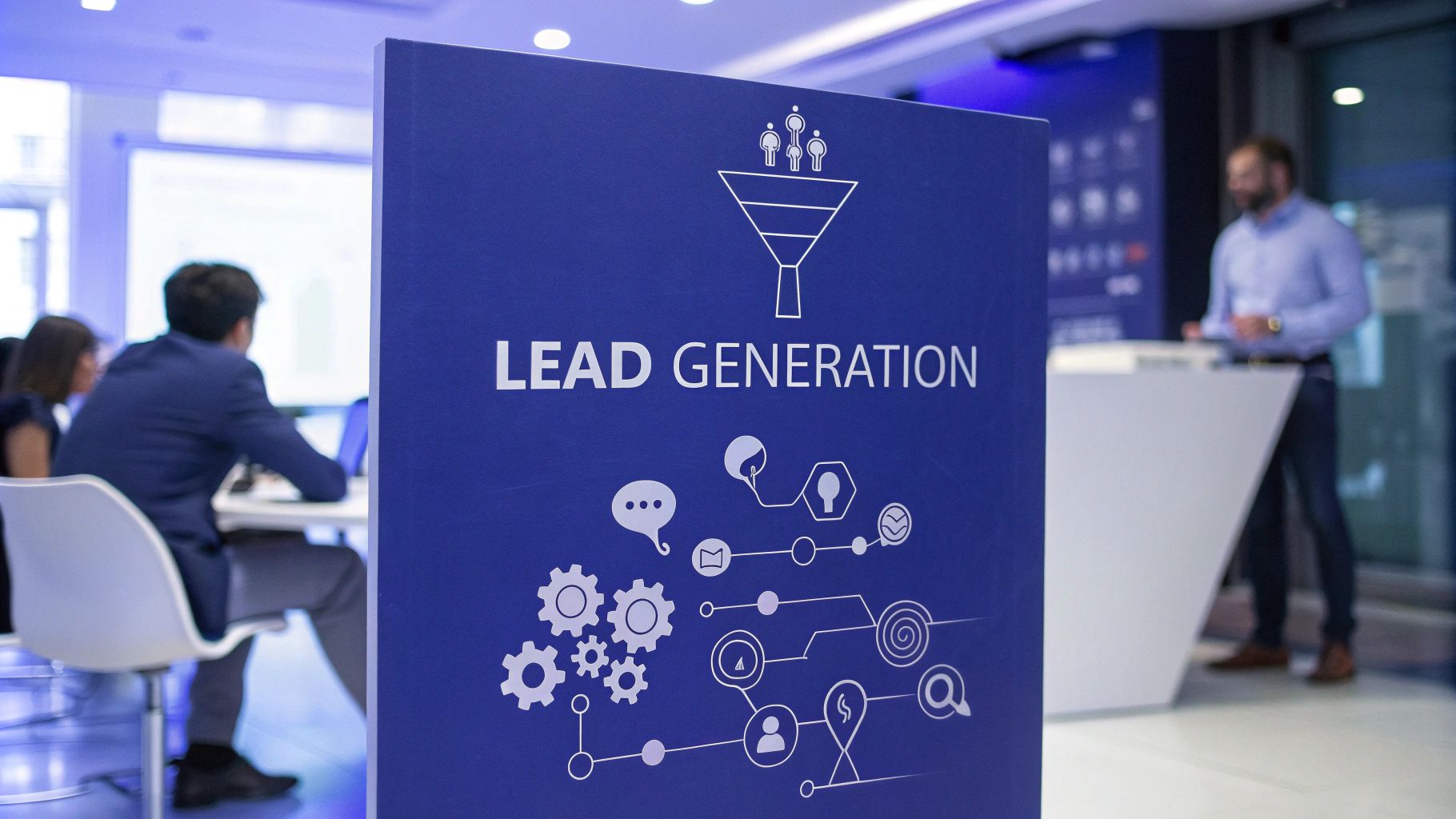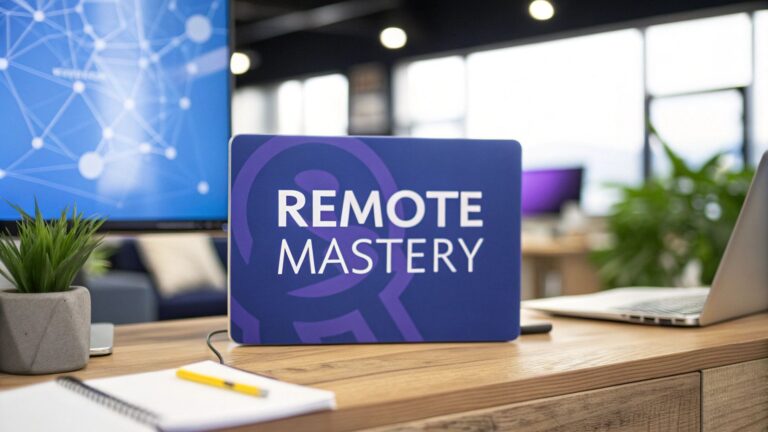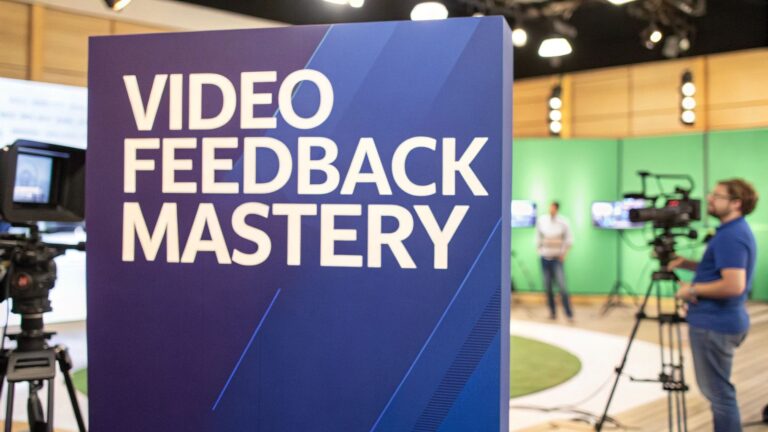Why Traditional Agency Lead Generation Is Failing

Remember how agencies once thrived on cold calling, networking events, and mass email campaigns? Those days are gone. These traditional lead generation tactics that worked reliably for years are now falling flat, leaving many agencies struggling to maintain a healthy pipeline of new business. Let's examine why these old methods no longer deliver results.
The Problem with the Old Ways
Think about your own inbox and phone – how many sales messages do you ignore daily? Your potential clients face the same overwhelming flood of outreach. Cold calls get screened, generic emails disappear into crowded inboxes, and while networking events still help build relationships, they rarely generate the same volume of leads they once did.
Client behavior has fundamentally changed too. Business buyers now thoroughly research agencies online, read reviews, examine case studies, and expect messages that speak directly to their unique challenges. A generic sales pitch about "growing your business" falls flat compared to specific solutions backed by research and data. For instance, when an agency takes time to understand a prospect's specific marketing goals and pain points before reaching out, they're far more likely to start a meaningful conversation.
The Metrics That Matter (and the Ones That Don't)
Many agencies still fixate on surface-level numbers like website visits and social media followers. While these metrics provide context, they often mask what really drives business growth – qualified leads and closed deals. Smart agencies now track metrics tied directly to revenue, such as conversion rates, acquisition costs, and client lifetime value. They use tools like Google Analytics to measure which strategies actually generate business results.
The rise of ad blocking technology and growing privacy concerns make it even harder to reach prospects through traditional advertising. Success now comes from building authentic relationships and consistently delivering value through quality content, thought leadership, and personalized communication. Tools like BugSmash help strengthen these relationships by enabling smooth client collaboration and feedback loops that drive better results.
Old-school lead generation is failing because the market has fundamentally changed. Between information overload, evolved buying habits, and misaligned success metrics, traditional tactics simply don't work like they used to. Agencies that thrive today focus on data-backed strategies, personal connection, and valuable content that speaks directly to client needs. In the next section, we'll explore how to build a modern lead generation system that consistently attracts and converts qualified prospects.
Building Your Content-Driven Lead Engine
Traditional lead generation isn't delivering the same results anymore. Smart agencies are adopting a new approach – creating valuable content that attracts and converts ideal clients. Companies taking this route have seen their leads increase by up to 70%. Why? Because they understand content goes far beyond just publishing blog posts.
Crafting Content that Converts
The key to attracting quality leads is connecting with decision-makers through targeted content. Rather than writing generic industry updates, focus on solving specific challenges your ideal clients face. For instance, if you serve SaaS companies, create detailed guides about growing user acquisition or maximizing customer lifetime value. This shows prospects you deeply understand their world and can help solve their problems.
Your content should also naturally highlight your agency's strengths. Share case studies of successful client campaigns, testimonials about strong results, and behind-the-scenes looks at your team's work. This builds credibility without being overly promotional. When prospects see evidence of your capabilities, they're more likely to reach out.
Scaling Content Production Without Sacrificing Quality
Consistently creating strong content takes work, especially as your agency grows. Start by building a detailed content calendar mapping out topics, keywords, and publication dates. This keeps your content pipeline full and organized.
But quantity alone isn't enough – maintaining high standards is crucial. Put a review system in place where experienced team members check content for accuracy and brand alignment. Tools like BugSmash help streamline feedback and revisions across different content types, from blog posts to video scripts. This ensures everything you publish reflects your agency's expertise.
Benchmarking Content Performance
To optimize your lead generation, you need to understand which content resonates most with your audience. Track key data like conversion rates, lead quality scores, and engagement metrics. These insights reveal what's working and what needs adjustment.
You might discover that webinars bring in better qualified leads than blog posts, or that case studies drive more conversions. Use this data to focus your resources on the most effective formats. By regularly measuring results and refining your approach, you'll build a content engine that consistently attracts ideal prospects to fuel your agency's growth.
Mastering Social Media Lead Generation

Creating content is just the first step – the real impact comes from smart social media promotion. The best agencies know that success isn't about broadcasting content, but about building genuine connections that turn followers into qualified leads. While some agencies see impressive 72% success rates on social media, others struggle to gain traction. The difference often comes down to knowing where your ideal clients spend their time and how to engage with them meaningfully.
Identifying the Right Platforms for Your Agency
Each social platform serves different audiences and purposes. For example, if you're targeting C-suite executives, LinkedIn might be your goldmine. But if you work in influencer marketing, Instagram or TikTok could deliver better results. The key is doing your homework – study your ideal client profile and find out which platforms they use most. This focused strategy helps you invest your time and resources where they'll have the biggest impact, rather than trying to be everywhere at once.
Building Authentic Engagement and Thought Leadership
After picking your platforms, focus on creating real connections. Skip the endless self-promotion and join meaningful industry discussions, share your expertise, and help solve common problems. For instance, you could share how your agency uses tools like BugSmash to improve client communication and project management. This gives potential clients a peek behind the curtain while showing how you deliver value. By consistently offering helpful insights, you build credibility that naturally draws in prospects looking for solutions.
Converting Followers into Qualified Leads
Social media gives you a front-row seat to understanding decision-makers. Pay attention to what they share, their questions, and which conversations they join. These insights help you craft messages that speak directly to their needs. Consider offering valuable resources like reports, webinars, or templates in exchange for contact details. This lets you build an email list from your social audience and nurture those relationships over time. Track your results – from clicks to conversions – and keep fine-tuning your approach based on what works. The goal is turning your social presence into a steady source of qualified leads who already know, like, and trust your agency.
Automation That Enhances Rather Than Alienates

Once you've built a strong social media presence and content strategy, smart automation becomes the next key piece in maximizing your agency's lead generation potential. The challenge is finding the sweet spot between efficiency and maintaining authentic relationships. When done right, automation can boost leads by 80% and increase conversions by 77%. Let's explore how to make automation work while keeping the human touch that clients value.
Choosing the Right Automation Tools
Success with automation starts with picking tools that actually match what your agency needs to accomplish. Many platforms make big promises, but the real test is whether they deliver measurable results for your specific goals. While some tools handle basic task automation, others offer more advanced capabilities like scoring leads and creating personalized email sequences. For example, BugSmash helps streamline feedback and collaboration across media types, which can strengthen client relationships and indirectly fuel lead generation through improved satisfaction.
Implementing Effective Lead Scoring
A well-designed lead scoring system helps you focus your efforts on the prospects most likely to convert. But scoring leads poorly can waste resources and cause you to miss promising opportunities. The best approach considers multiple factors like website engagement, content downloads, and social media activity. Give higher point values to actions that show serious interest – downloading a case study should count more than just visiting your site. This helps your team concentrate on leads with the highest potential. For more tips on improving efficiency, check out Time-saving techniques for feedback loops.
Avoiding Automation Pitfalls
While automation can supercharge lead generation, certain mistakes will drive prospects away and damage your reputation. Spamming contacts with generic messages or failing to add a personal touch makes people feel like faceless leads in your system. Think about getting 10 identical emails from an agency in a week – that's more likely to annoy than attract. Similarly, chatbots that give canned responses without addressing specific questions leave potential clients frustrated. Use automation to supplement and enhance human interaction, not replace it entirely.
Tailoring Automation to Agency Size
The right automation approach depends on your agency's scale and structure. A smaller agency might focus on automating email marketing and social posts. Larger agencies with dedicated sales and marketing teams can benefit from more robust platforms with CRM integration, lead nurturing workflows and detailed analytics. But regardless of size, the core principle stays the same: automate routine tasks to free up your team for building relationships and delivering outstanding service. This balanced approach combining efficiency with the human element is what drives sustainable lead generation success.
Optimizing Your Lead Generation Investment
Let's explore how you can get the most value from your agency's lead generation efforts. Many agencies struggle with lead costs that vary dramatically – some paying as little as $10 per lead while others spend over $1,000. Understanding what drives these differences is key to making smart budget decisions that deliver real results.
Understanding Your True Lead Value
Before trying to reduce costs, you need to know exactly what a lead is worth to your business. This calculation involves several important factors:
- Average deal size: The typical revenue you earn from each client
- Conversion rate: How many leads actually become paying customers
- Client lifetime value: Total revenue earned over the full client relationship
Here's a real example: If your average deal brings in $10,000, you convert 10% of leads, and clients typically generate $20,000 over their lifetime, each lead is worth about $2,000 (10% of $20,000). This helps set realistic targets for what you should spend to acquire leads.
Practical Strategies for Reducing Acquisition Costs
With a clear understanding of lead value, you can focus on proven ways to lower costs:
- Sharpen Your Targeting: Stop wasting money on broad campaigns. Use tools like LinkedIn to reach exactly the right prospects based on industry, role, company size and other key factors.
- Create Outstanding Content: High-quality articles, videos and resources attract organic traffic and build trust. This reduces dependency on expensive ads while improving lead quality.
- Build Better Landing Pages: Even great campaigns fail with weak landing pages. Make sure yours have clear calls-to-action and compelling reasons to convert. Tools like BugSmash help gather user feedback to boost performance.
- Use Smart Retargeting: Re-engage interested prospects who visited but didn't convert. This boosts conversion rates significantly at a lower cost.
Making Data-Driven Decisions
Let the numbers guide your strategy by tracking key metrics:
- Cost per lead (CPL): Shows which channels give you the best return
- Conversion rate: Helps identify where leads get stuck in your funnel
- Customer acquisition cost (CAC): The total investment needed to win a new client
Regular analysis reveals what's working and where to focus your budget for maximum impact. This keeps your approach grounded in reality rather than assumptions.
Hidden Cost Factors
Don't forget these often-overlooked expenses:
- Team time: Account for hours spent on lead gen activities
- Software and tools: Add up subscriptions for marketing, automation and CRM
- Content creation: Factor in resources needed for quality content
Including these costs gives you the full picture of your lead generation investment. This helps identify opportunities to work more efficiently while maintaining quality. Focus on both obvious and hidden costs to build a sustainable, profitable lead generation engine.
Building a Lead Nurture System That Works

You've invested in lead generation – now what? The real work begins with crafting a lead nurture system that converts those prospects into clients. Most agencies miss this crucial step, but the numbers show its importance: nurtured leads make 47% larger purchases at a 33% lower cost. This dramatic difference comes from building trust, addressing specific concerns, and showing prospects why your agency is their best choice.
Understanding the Lead Nurturing Journey
Think of lead nurturing like dating – you wouldn't propose marriage at first sight. The same principle applies to sales: pushing too hard too soon drives prospects away. Instead, guide them through a natural progression:
- Awareness: When prospects first recognize their problem
- Consideration: As they explore possible solutions
- Decision: When they're ready to choose a partner
Your content should match where prospects are in their journey. Share educational blog posts and webinars during awareness, case studies and testimonials during consideration, and specific proposals and pricing when they're ready to decide.
Creating Personalized Nurture Sequences
Mass emails won't win clients anymore. Focus on creating targeted sequences that speak to specific segments and their unique challenges. Group your leads by industry, company size, or the services they need. This lets you address their exact concerns and pain points.
For example, if someone downloads your social media marketing guide, follow up with content showcasing your social media wins and expertise. Make each touchpoint relevant to their specific interests and needs.
Maintaining Engagement Throughout the Sales Cycle
Agency sales cycles often stretch longer than B2C purchases. Keep leads warm with a mix of email marketing, social media engagement, retargeting ads, and personal outreach. Tools like BugSmash help build trust through seamless feedback and collaboration, even before the deal closes. Consistent communication shows you're invested in their success. Here's more on measuring impact: 5 Client Feedback Metrics That Drive Results.
Measuring Nurture Effectiveness
Track key metrics to optimize your nurture system: open rates, click-throughs, conversions, and ultimately, new client acquisitions. This data reveals which sequences work best and where to improve. Regular analysis and adjustments based on real results will turn your nurture program into a reliable source of agency growth.
Ready to improve how your agency handles client feedback and collaboration? Try BugSmash today and see the difference! Get started with BugSmash now!




